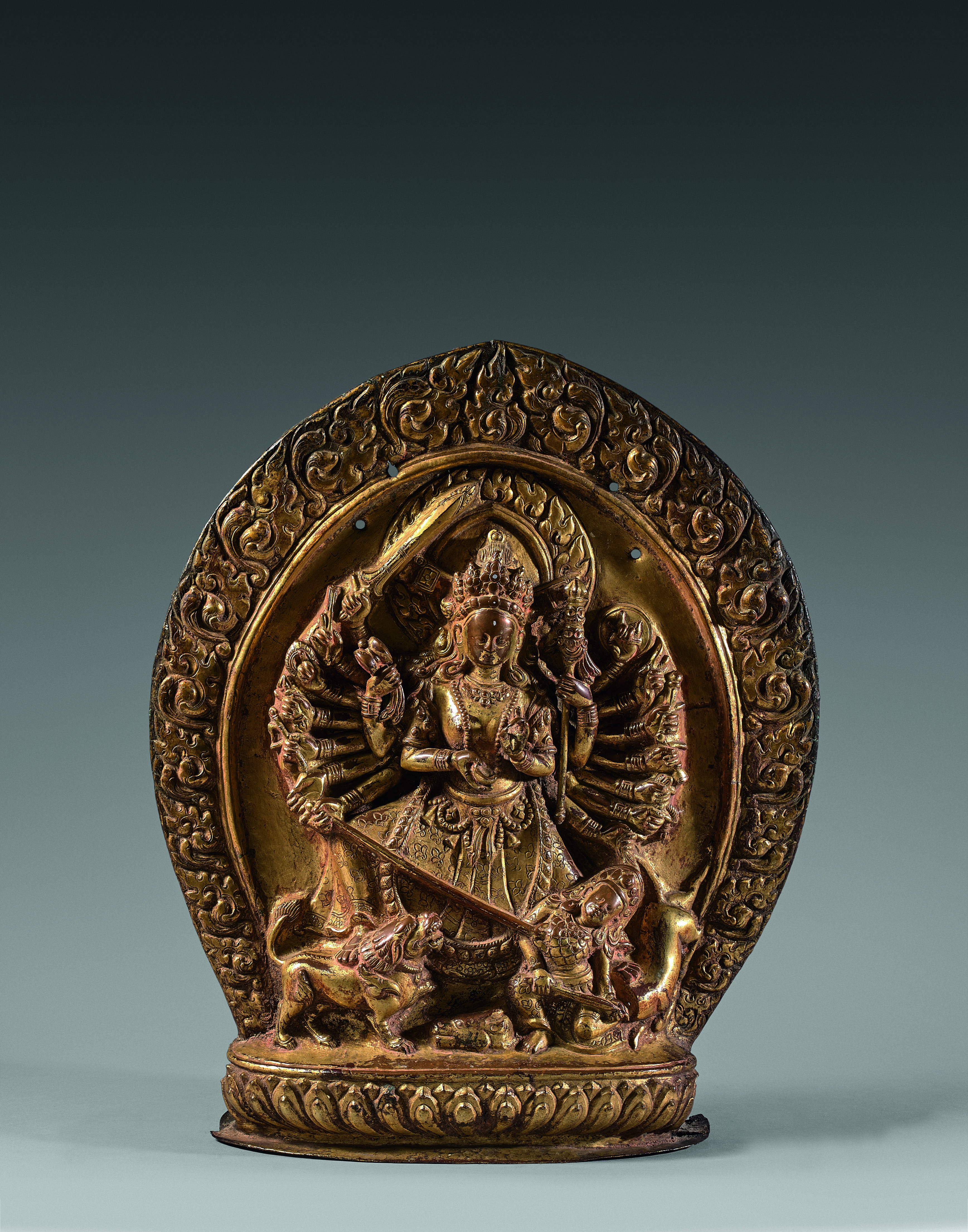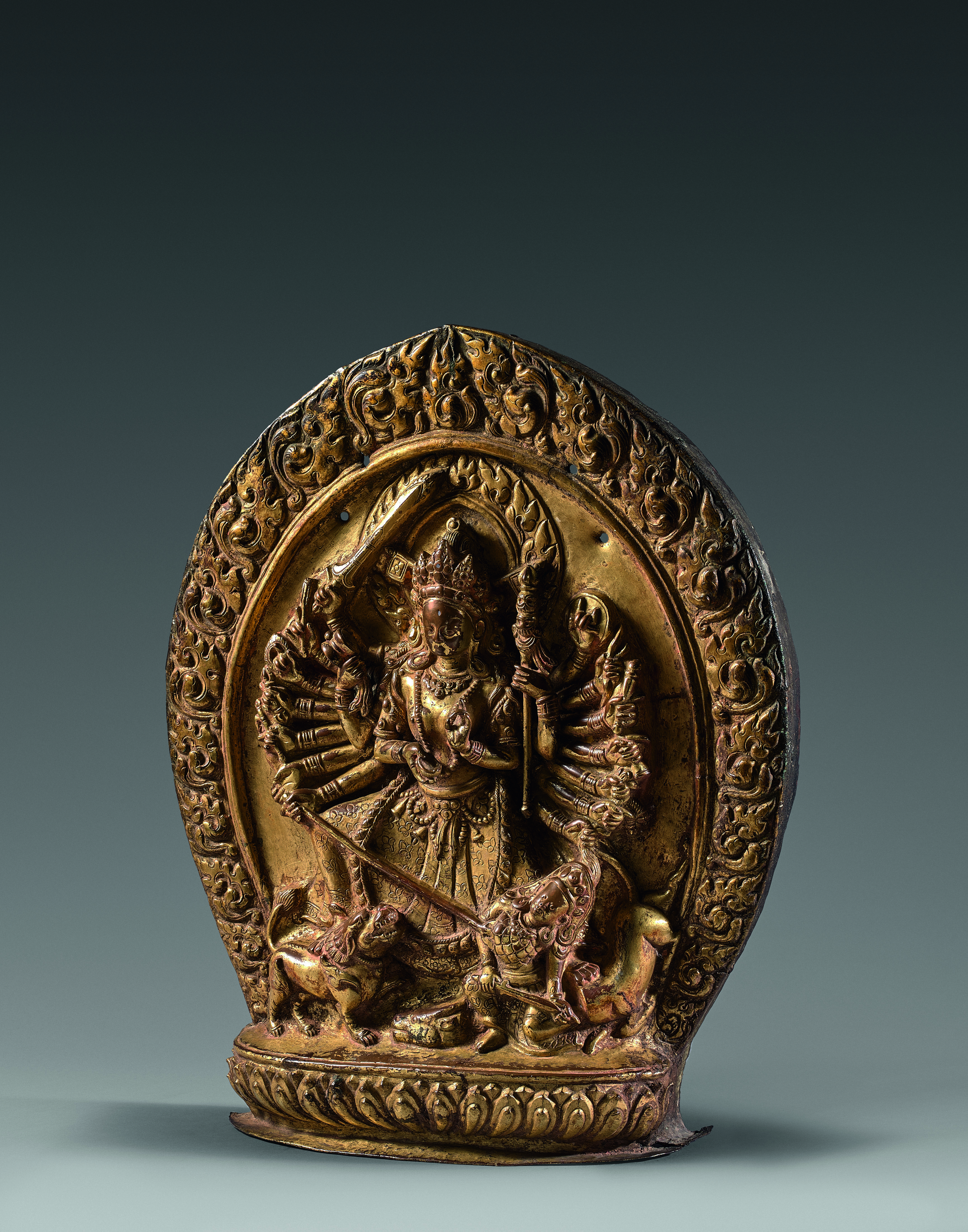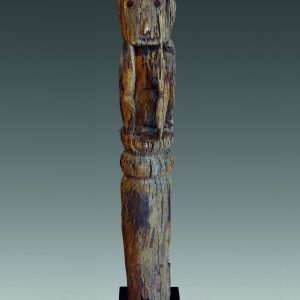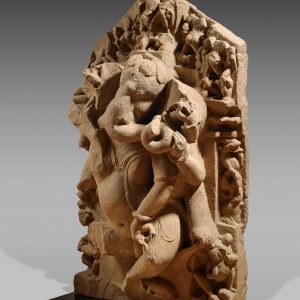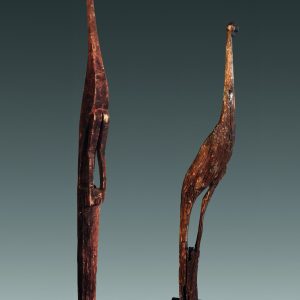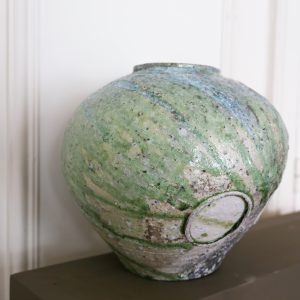Durgā Mahișasurāmardinī
Gilded copper
Nepal, Kathmandu Valley
17th century
H. 41 cm
Description
This particularly impressive form of the Great Goddess of Hinduism bears the name Mahișasurāmardinī, the “Slayer of the Buffalo Demon”, or more simply Mahișamardinī. Her legend is described in the Vāmana-Purāna, a text part vaiṣṇava and part śaiva, but also in the Mārkaņdeya-Purāņa and the Śiva-Purāṇa.
Born of an asura demon and a female buffalo, Mahișa could choose to take on a bovine or human form. A zealous worshipper of Brahma, that god gave him the gift of being impossible to vanquish by any mortal. Backed by huge armies of demons, he set out to conquer the world, driving out the gods and declaring himself king to replace Indra. The gods complained to Vishnu, out of whom came great light, as well as from two other major gods. These three beams of light converged, giving birth to a woman. All the gods present gave her weapons and after epic battles, the monstrous demon and his demonic armies were vanquished.
The myth refers to a legend – which could be of native origin – which arose relatively recently. She doesn’t appear to exist before the first centuries of the Christian era. Her cult grew only in the 6th-7th centuries, but then aroused unequaled fervor which has continued until contemporary times. During the final combat represented here, the goddess cut off the head of the buffalo and then ran her spear through the asura who sprang out of the wound in its anthropomorphic shape. Her foot lies on the mane of a lion, her special steed. In this form, the number of arms Durgā has varies. Often there are eight in India, but not sixteen as has often been the case in the Kathmandu Valley, since at least the 13th century.
The work is part of the construction and decoration of monuments by the sovereigns of the three kingdoms of Bhaktapur, Kathmandu and Patan, especially Pratāpa malla of Kathmandu (reigned 1641-1674) and Bhūpatīndra malla of Bhaktapur (r. 1696-1722). Executed using the hand-embossed repoussé technique, such a piece could have been part of the decoration of a tympanum over the door to a sanctuary of Mahișasurāmardinī. We can cite two famous decorative artworks on monuments representing other fierce, fighting goddesses: the pediment of the temple of Vajrayogiņī above the town of Śankhu (1654) or the Śundhokā gate of the darbār of Bhadgaon (1703). Without being part of this aulic art, this finely-crafted plaque is characteristic of the best workshops of the 17th and very early 18th centuries. Note the flow of the movement, the expressiveness of the roaring lion’s face and the fierce flames framing the divine scene.
Provenance: Collection of Boris Lisanevich and Inger Pheiffer, 1955.

